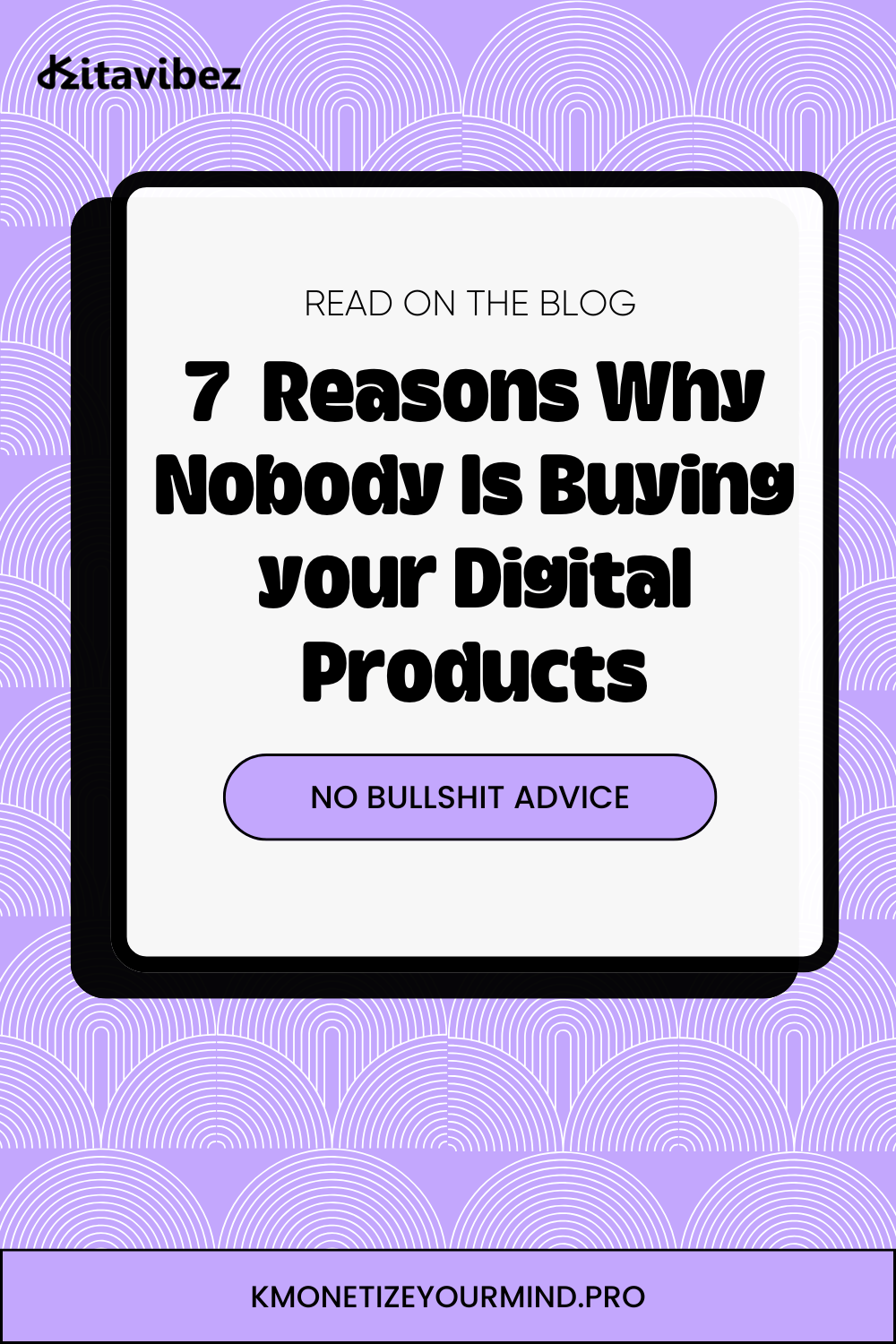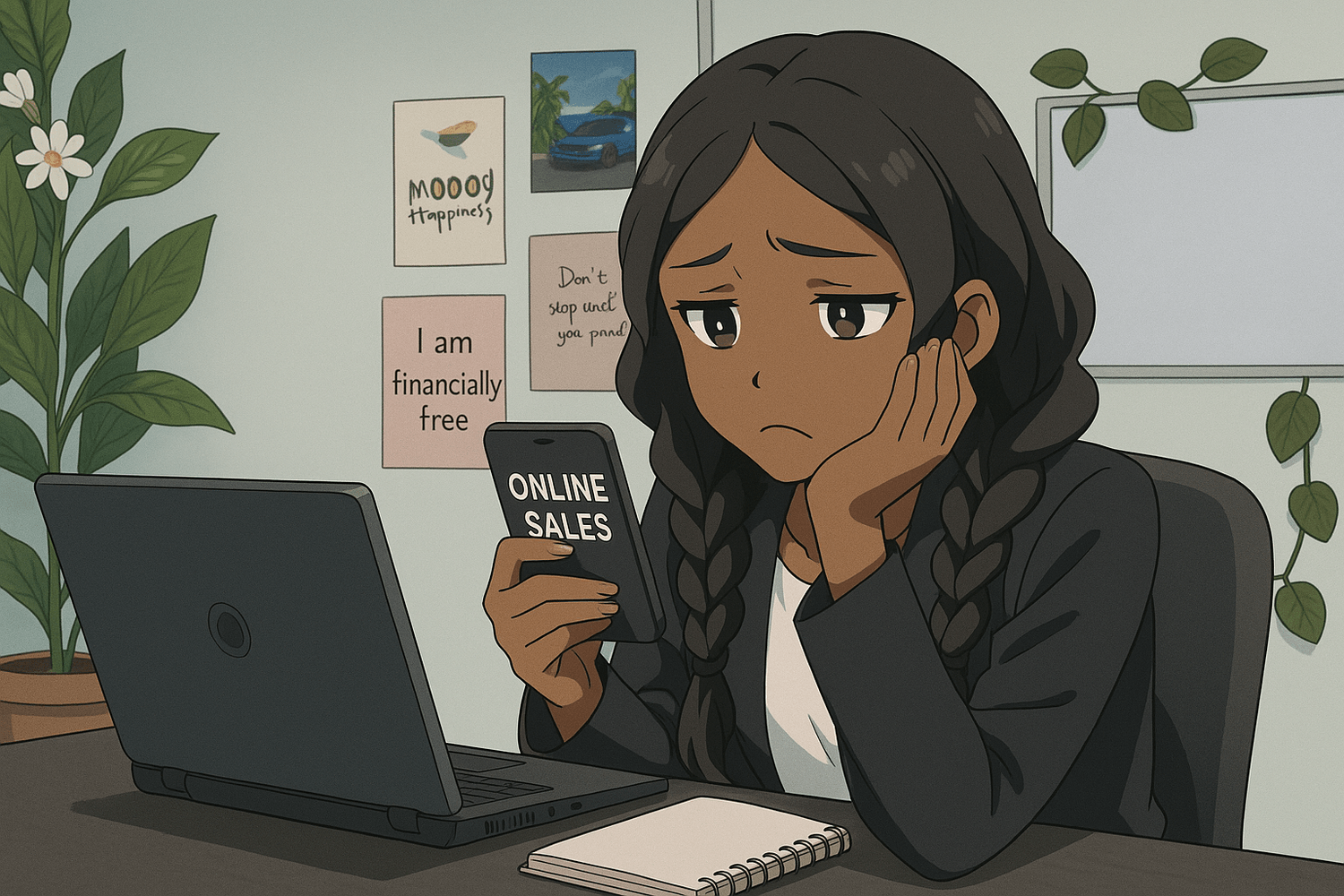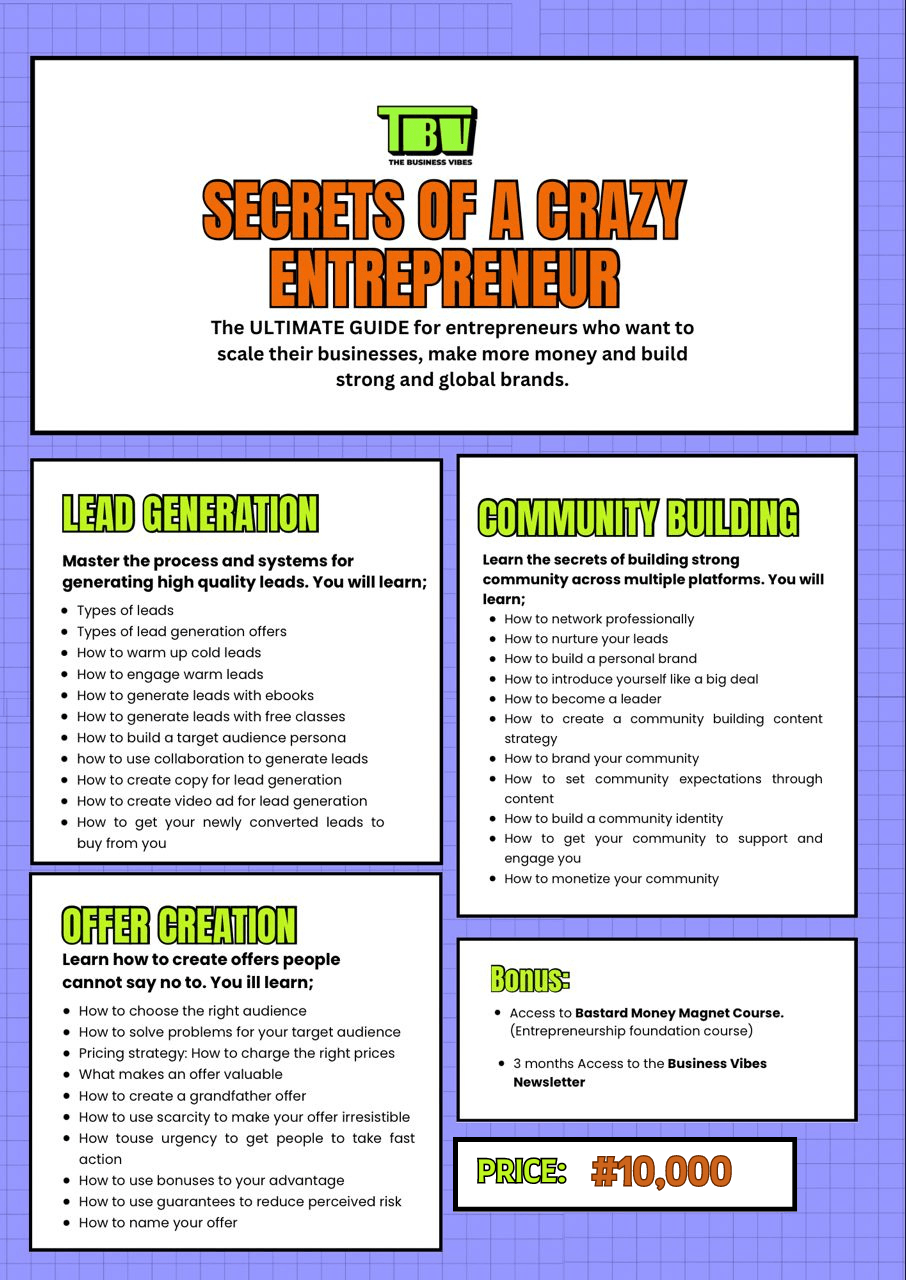7 Reasons Why No One Is Buying Your Digital Product
SUBSCRIBE TO THE BUSINESS LOVE LETTERS HERE FOR FREE
Join thousands of readers who get practical tools, insights, and updates to grow every week.
We HATE spam. Your email address is 100% secure
7 Reasons Why No One Is Buying Your Digital Product

The internet doesn’t lack gurus who claim that with ChatGPT and your mobile phone, you can create a digital product that will earn you millions of naira.
They promise to share their template if you comment “Money” or “Digital Product.” Yet when you try these guides, you often end up losing money instead of making more.
The real issue is that they present complex problems as simple, and as a result share solutions that don’t work for everyone.
Let me be real with you: selling digital products is not a get-rich-quick scheme. Unless you plan to lie your way to the top, which can easily leave you labelled as a scammer and damage important relationships, you’ll need to do the work.
In this article, I’ll break down why no one has bought the product you worked so hard to create. I’ll share the top mistakes I see people make, what I’ve personally experienced, and how to fix them so you can finally become profitable.
The Top Mistakes Killing Your Digital Product Business

Before we get into the list, let’s be honest selling digital products looks easier than it actually is. Many creators jump in expecting quick money, only to realize that success takes real strategy, patience, and consistent effort.
These mistakes aren’t meant to shame you, but to help you see what’s been holding you back so you can fix them and finally start making sales.
1. You Think Selling Digital Products Is Easy Money
Honestly, it’s not your fault. The internet is filled with marketers who make digital products sound ridiculously simple.
You jump in thinking it’s a cheat code for making money, when in reality, it takes as much work as any other business.
I made this mistake too. I let my guard down and treated it like a side hustle instead of a full business.
Digital products are easier to scale than physical businesses that require logistics, inventory, and packaging. You only need to create them once and they can be sold again and again.
But don’t confuse easier with cheap. Getting started still comes with real costs.
2. You’re Not Spending Enough Money
Because of how digital products are marketed online, many people think the barrier to entry is low and that anyone can do it.
And they’re right, anyone can create a product. But not everyone can make money from it.
If your plan is to actually profit, you need to treat this like a real business with real expenses.
Here are some of the things that cost me money in my digital product business:
Systeme.io – ₦72,000/month ($47). My all-in-one CRM where I host courses, build funnels, run my store, host my website, and send emails.
Zoho Books – ₦3,600/month. For invoicing and tracking finances.
Notion – Free (paid version $10/user). I use it to manage projects and track everything.
Canva – ₦2,600/month. For designs, PDFs, thumbnails, and marketing visuals.
Selar – ₦12,000/month. Where I used to host my courses before moving to Systeme.
CapCut – ₦10,000/month. For editing videos.
Captions App – ₦4,500/month. For subtitles, noise cleanup, and faster edits.
Google One – ₦9,900/month. For cloud storage.
That’s just tools. Depending on how fast you want to grow, you may also need to hire:
Graphic designers – ₦6k to ₦10k per flyer
Video editors – ₦6k to ₦45k per video
Virtual assistants – ₦50k+ per month
Web designers – ₦200k+
Copywriters – prices vary
Media buyers – ₦50k+
You could try learning all these skills yourself, but mastery takes years. Doing everything alone often leads to mediocre products that no one buys.
Add ad spend and mentorship (which, by the way, has been one of my best investments), and the costs stack up.
The truth is simple: there’s nothing cheap about building a profitable digital product business. If you want to scale, you have to invest.
3. You Don’t Listen to Mentors
I’ve worked with several people who wanted to start digital product businesses. One major issue stood out. They didn’t listen.
They tried to reinvent the wheel or insisted on creating something completely unique.
Here’s what I’ve learned: when it comes to marketing, it’s better to follow proven frameworks than to gamble with untested ideas.
I made this mistake myself. Trying to figure everything out on my own cost me more in time and money than simply paying for the right knowledge.
4. You Create Products Nobody Cares About
Just because you can create a digital product doesn’t mean you should.
Not every problem is profitable to solve. Before I create something new, I now check three things:
Market size: Is there enough demand? A pet care course in Nigeria won’t sell like a course on Instagram marketing.
Problem value: Is the issue painful enough for people to pay for? If Google can solve it in one search, they won’t pay ₦30k for your course.
Differentiation: Do I solve this problem in a better way than others? If my offer looks the same as everyone else’s, price becomes the only differentiator. It’s a race to the bottom.
I’ve created products I thought were smart, only to realize nobody wanted them. Lesson learned: create for demand, not ego.
5. You Don’t Understand the Difference Between a Product and an Offer
This mistake held me back for a long time.
A product solves a problem. An offer makes the solution urgent and irresistible.
An offer shows what’s at stake if the problem isn’t solved. It highlights the ROI. It reduces risk with guarantees and creates urgency with deadlines or limited slots.
The day I stopped launching just “products” and started creating offers, my sales shifted.
6. You Don’t Have an Audience to Launch To
I used to think friends and family would support my launches. They didn’t. Not because they didn’t care, but because they weren’t my target audience.
Many creators make this same mistake. They create a product first, then scramble to find buyers.
The smarter way is to build an audience first. Grow an email list, a WhatsApp community, or any space filled with people who actually care about the problems you solve.
Then create products for them.
7. You Don’t Create Enough Content
Even with an audience, you still need to prove your value.
That means creating content. Consistently. Content that teaches, positions you as an authority, and builds trust.
Too many creators bring in leads just to sell to them immediately. Without building trust or relationships. And they expect to make massive sales.
The more content you share, the easier it becomes to convert your audience into customers. Trust drives revenue.
Thankfully, I created a beginner-friendly course called Secrets of a Crazy Entrepreneur to help you figure out how to generate leads for your business, create solid offers, and build a strong community. So you can make sales daily instead of every other day.
Click here to get it if you are interested
Final Thoughts
If you see yourself making any of these mistakes, it’s time to fix them. I’ve made many of them myself and I’ve seen others repeat them too. The good news is that each one is fixable.
Treat your digital product like a real business. Invest in tools and mentorship. Build your audience before you launch. Create irresistible offers. And show up with consistent content.
If you are ready to start selling your own digital products or you would like to rebuild your digital product business the right way, Click this link to learn how to work with me.

HEY, HEY, HEY, I'M KITA
I’m an author, coach, and founder of Kitarific, a digital marketing agency. I’ve built an 8-figure freelance and digital business while helping thousands of freelancers do the same. Here, I share the strategies that turn skills into income — so you can stop undercharging and start earning what you’re worth.


